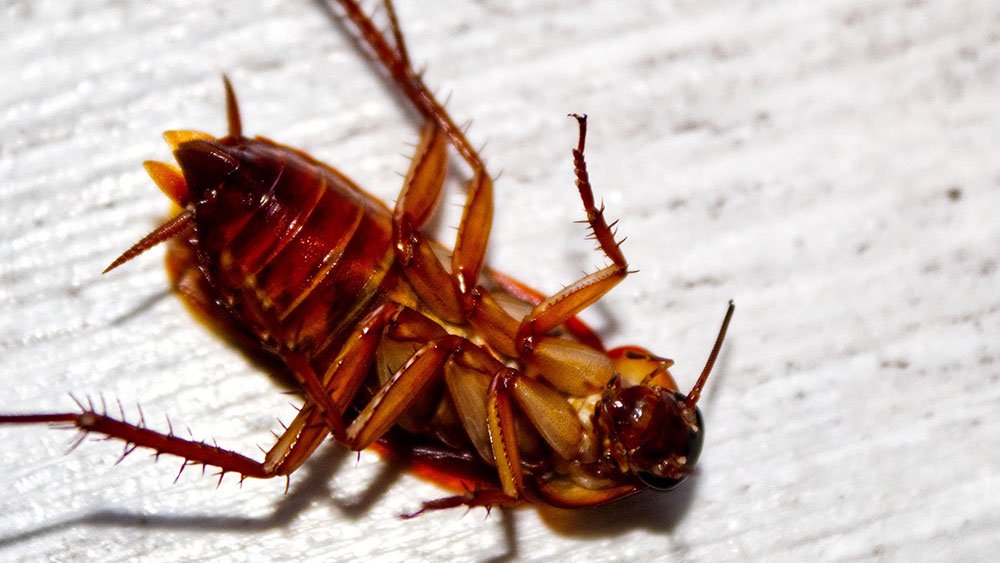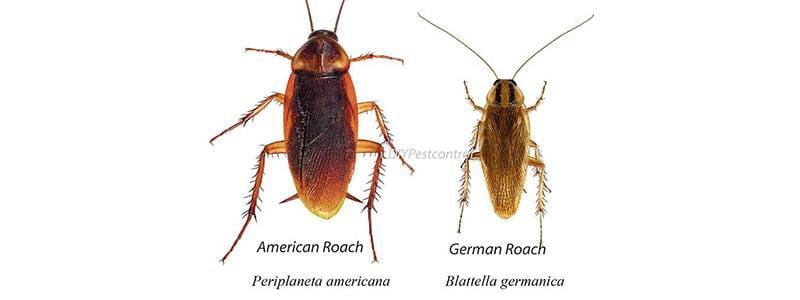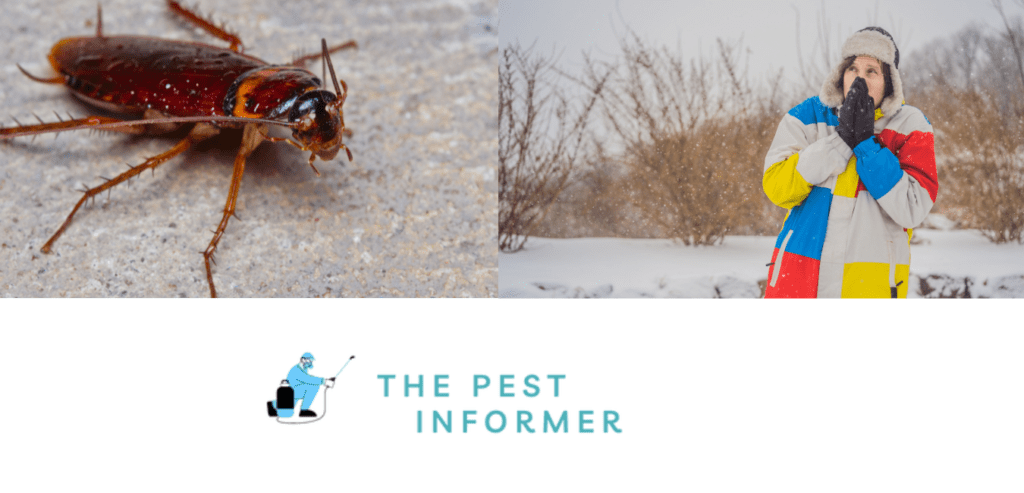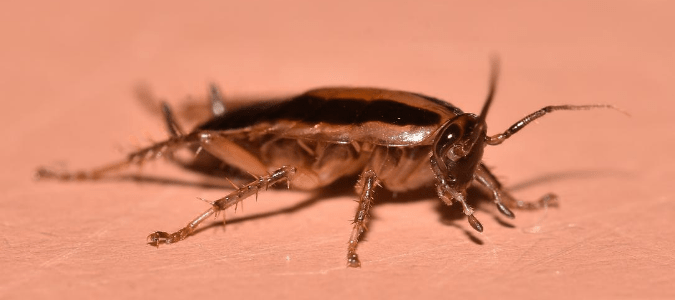Living with a few unwanted house guests can be unsettling, but how many roaches does it take before you should finally call an exterminator? Nobody wants to share their home with creepy crawlies, especially when they start multiplying faster than you can squash them. In this article, we’ll explore the signs that indicate it’s time to summon professional help and bid goodbye to the roach brigade invading your space. So, grab a cup of tea, get comfortable, and let’s figure out when it’s time to make that much-needed phone call.


Signs of a Roach Infestation
Seeing live roaches
One of the most obvious signs of a roach infestation is actually spotting live roaches scurrying across your floors, walls, or countertops. Roaches are nocturnal creatures, so if you see them during the day, it’s a clear indication that their population has grown significantly.
Finding roach droppings
Another telltale sign of a roach infestation is finding roach droppings in your home. Roach droppings resemble small, black grains of pepper or coffee grounds. You may discover them in areas where roaches are likely to frequent, such as kitchen cabinets, drawers, or behind appliances.
Noticing a musty odor
Roaches emit a distinct musty odor that lingers in the air when they infest a space. If you notice a strong and unpleasant smell in your home, especially in areas where roach activity is suspected, it’s a clear indication that you may have a roach problem. Trust your senses and consider investigating further.
Emergency Situations
If you see a significant number of roaches during the day
If you encounter a significant number of live roaches during the daytime, it’s crucial to treat it as an emergency situation. Roaches typically avoid light and human activity, so if they are daring enough to venture out in broad daylight, it suggests a large population that needs immediate attention.
If you find roaches in your food storage areas
Discovering roaches in your food storage areas, such as the pantry or cabinets, is another emergency situation that requires immediate action. Roaches have a keen sense of smell and are attracted to food sources, so finding them near your food can contaminate it and pose a threat to your health. Protecting your food supply should always be a priority.


Determining the Extent of the Infestation
Inspecting key areas
To determine the extent of a roach infestation, it’s essential to thoroughly inspect key areas of your home where roach activity is likely to be concentrated. Check dark and warm spaces such as behind appliances, under sinks, or in cracks and crevices. Be diligent in your search and keep an eye out for any signs of roach presence.
Using glue traps
Utilizing glue traps is a useful method for assessing the severity of a roach infestation. Place these traps near areas where roaches are suspected, such as along baseboards or in corners. The roaches will be attracted to the traps, get stuck in the glue, and their numbers can give you an idea of the scale of the infestation.
Monitoring roach activity
Regularly monitoring and keeping track of roach activity is crucial in understanding the extent of the infestation. Keep a log of sightings, droppings, and any other signs of roach presence. By documenting this information, you can provide valuable insights to professionals if you decide to seek their assistance.
Considering Health Risks
Roaches and allergies
Roach infestations can trigger allergic reactions in sensitive individuals. Roach saliva, droppings, and shed skin contain allergenic proteins that can cause symptoms such as sneezing, coughing, itchy skin, and watery eyes. If you or someone in your household experiences these symptoms, a roach infestation may be the underlying cause.
Roaches and asthma
For individuals with asthma, roaches pose a significant risk. The allergenic substances present in roach waste can exacerbate asthma symptoms and lead to severe respiratory distress. If you or a family member has asthma and experiences increased breathing difficulties, it’s crucial to consider the presence of roaches and their potential contribution to the problem.
Roaches and disease transmission
Roaches are known to carry and transmit various pathogens that can cause diseases. They can contaminate food and surfaces with bacteria, such as Salmonella and E. coli. These bacteria can potentially lead to food poisoning, gastrointestinal infections, and other health issues. If you have a roach infestation, it’s important to address it promptly to minimize the risk of disease transmission.


Infestation Prevention
Keeping a clean environment
Maintaining a clean and tidy environment is one of the key preventive measures against roach infestations. Regularly sweep, mop, and vacuum your floors, ensuring no food crumbs or spills are left behind. Wipe down countertops, tables, and other surfaces to eliminate any potential food sources that might attract roaches.
Sealing entry points
Roaches can enter your home through tiny cracks and openings, so it’s crucial to seal any possible entry points. Inspect your walls, windows, doors, and foundation for gaps or holes, and use caulk or weatherstripping to seal them. Additionally, repair or replace damaged screens on windows and doors to prevent roaches from infiltrating your space.
Proper food storage
Roaches are attracted to accessible food sources, so it’s important to store your food properly. Transfer it to sturdy, airtight containers to prevent roaches from contaminating it. Keep your pantry and cabinets clean, regularly checking for expired or damaged food items that might attract roaches.
Regular garbage disposal
Roaches are scavengers and can thrive in garbage and waste. Ensure that your garbage cans have tight-fitting lids and empty them regularly. Wipe down the cans and surrounding areas to eliminate any enticing odors that might attract roaches. Proper waste management is essential in creating an inhospitable environment for these pests.
Contacting a Professional Exterminator
When in doubt, call an exterminator
If you are unsure about the severity of your roach infestation or if your DIY efforts have proven ineffective, it’s best to contact a professional exterminator. They have the knowledge, experience, and tools to effectively identify, treat, and eliminate the roach problem. A professional assessment can give you peace of mind and ensure thorough eradication of the infestation.
Consulting with an expert
Before deciding on a course of action, consult with an exterminator to discuss your particular situation. They can provide insights based on their expertise, evaluate the severity of the infestation, and recommend the most suitable treatment plan. Consulting with an expert can help you make an informed decision regarding the best approach to tackle your roach problem.
Seeking professional advice
Even if you opt for DIY methods initially, seeking professional advice is always beneficial. Exterminators can offer guidance on preventive measures, educate you about potential risks, and provide tips on maintaining a roach-free environment. Their expertise can help you navigate through various challenges and ensure long-term success in combating roach infestations.
Considering your comfort level
Your comfort level in dealing with roach infestations plays a significant role in deciding whether to contact a professional exterminator or adopt DIY methods. While some individuals are comfortable tackling the problem themselves, others may prefer to leave it to the experts. Consider your level of expertise, time availability, and willingness to handle the situation to make the most appropriate decision for yourself and your home.


DIY Methods to Try First
Using roach baits and traps
Roach baits and traps are a popular choice for DIY roach control. These products contain attractive baits infused with insecticides. The roaches are lured by the bait, consume it, and carry it back to their hiding places, eventually killing off the colony. Place these baits and traps strategically near roach hotspots for optimal efficacy.
Applying boric acid
Boric acid is a highly effective insecticide that is often used to combat roach infestations. It acts as a stomach poison, causing the roaches to die after ingesting it. Dust boric acid in areas where roaches are likely to travel, such as behind appliances, under sinks, or in hidden corners. Exercise caution when using boric acid, as it can be harmful if ingested or inhaled by humans or pets.
Using natural repellents
If you prefer more natural methods of repelling roaches, there are some options to consider. Essential oils like peppermint, eucalyptus, and lavender are known to have strong insect-repellent properties. Dilute a few drops of these oils in water and spray the solution in areas where roach activity is observed. However, it’s important to note that natural repellents may be less effective compared to chemical insecticides.
Factors to Consider
Your tolerance threshold
Every individual has a different tolerance threshold when it comes to pests like roaches. Some people may be deeply disturbed and uncomfortable with even the smallest infestation, while others may be more resilient. Assess your personal tolerance level and consider how it impacts your overall well-being and peace of mind.
The size of your property
The size of your property is an important factor to consider when deciding whether to call an exterminator. Larger properties may have more hiding spots and potential roach habitats, making it challenging to eradicate the infestation on your own. Professional exterminators are equipped to handle infestations in properties of all sizes, providing comprehensive treatments.
Your financial situation
It’s important to be mindful of your financial situation when deciding between DIY methods or professional extermination. Hiring a professional can be more costly initially, but it may provide more effective and long-lasting results. However, if your budget is tight, you can explore DIY options while being aware that they may require more effort and time to achieve the desired outcome.


Roach-Free Home Maintenance
Regular inspections and cleaning
To maintain a roach-free home, regular inspections and cleaning are vital. Conduct routine inspections of key areas where roach infestations are likely to occur. Clean your home thoroughly, paying attention to areas such as the kitchen, bathrooms, and storage spaces. Regular maintenance and cleanliness act as strong deterrents against roaches and discourage their presence.
Applying preventive treatments
Once you have successfully addressed a roach infestation, it’s important to apply preventive treatments to ensure long-term protection. Use residual insecticides or insect growth regulators in areas prone to roach activity. These treatments create a barrier and inhibit roach reproduction, reducing the likelihood of future infestations.
Working on long-term solutions
Creating a roach-free home requires long-term commitment. Identify and address any structural issues that may contribute to roach infestations, such as leaky pipes or cracks in the foundation. Implement integrated pest management strategies, including regular inspections, proper sanitation, and targeted treatments, to proactively prevent roach problems in the future.
Conclusion
Detecting the signs of a roach infestation early on is crucial to ensure swift action and prevent the problem from escalating. Whether you choose to handle the infestation yourself or seek professional help, addressing a roach problem promptly is essential for the health and well-being of you and your family. By implementing preventive measures and adopting a proactive approach, you can maintain a roach-free home and enjoy a pest-free living environment.
Your Expert in Animal Control and Extermination. Trust our experience for humane, effective pest management, protecting your property and ensuring peace of mind with Michael S.





